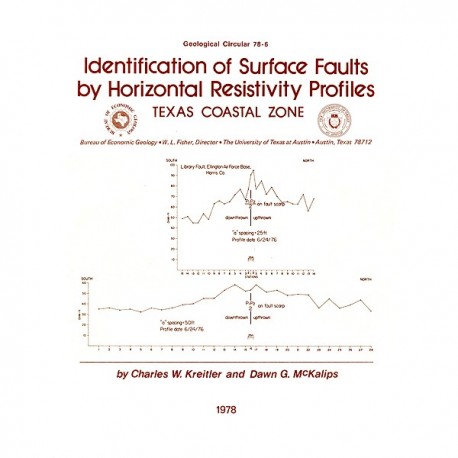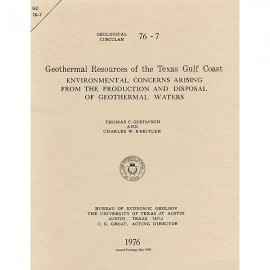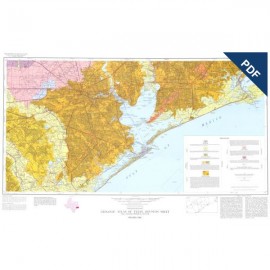Geological Circulars
-
Books & Reports
- Reports of Investigations
- Guidebooks
- Udden Series
- Geological Circulars
- Down To Earth
- Atlases of Major Oil and Gas Reservoirs
- Texas Memorial Museum Publications
- Environmental Geologic Atlas of the Texas Coastal Zone
- Mineral Resource Circulars
- Other Reports
- Seminars and Workshops
- Handbooks
- Submerged Lands of Texas
- Symposia
- Annual Reports
- Open File Reports
-
Maps & Cross Sections
- Thematic Maps
- Miscellaneous Maps, Charts & Sections
- Geologic Atlas of Texas
- STATEMAP Project Maps
- Geologic Quadrangle Maps
- Cross Sections
- Highway Geology Map
- Energy and Mineral Resource Maps
- Shoreline Change and Other Posters
- Wilcox Group, East Texas, Geological / Hydrological Folios
- Bouguer Gravity Atlas of Texas
- River Basin Regional Studies
- Featured Maps
- Posters
- Teachers & the Public
-
Geological Society Publications
- Gulf Coast Association of Geological Societies
- Alabama Geological Society
- Austin Geological Society
- Corpus Christi Geological Society
- Houston Geological Society
- Lafayette Geological Society
- Mississippi Geological Society
- New Orleans Geological Society
- South Texas Geological Society
- GCS SEPM Publications
- Historic BEG & UT Series
Identification of Surface Faults by Horizontal Resistivity Profiles
GC7806
A free, digital version of this publication can be found on: Texas ScholarWorks
GC7806. Identification of Surface Faults by Horizontal Resistivity Profiles, by C. W. Kreitler and D. G. McKalips. 29 p., 17 figs., 1978. ISSN: 0082-3309. Print.
To purchase this publication as a PDF download, please order GC7806D.
ABSTRACT
The land surface in the Texas Coastal Zone is interlaced with active and potentially active surface faults. They are subtle features which are difficult to identify until they have caused damage to manmade structures. To date (1978), significant damage has resulted. Faults intercept 2 airports, interstate highways at 11 different locations, and railroad tracks at 28 locations. Faults also pass through 11 residential communities. More than 200 houses in these communities in Harris and Galveston Counties show structural damage because of faulting. Fault movements of only a few inches per decade can cause significant structural damage, and no architectural style or structural design is immune. Foundations break, and cracks extend up the exterior and interior walls of the structure. Although breaks in buildings and highways are one of the best criteria for identifying surface faults, the damage has already occurred.
Kreitler (1976) has listed four criteria that can be used to identify the presence of a surface fault before a structure is built. They are recognition of (1) topographic scarps; (2) shallow subsurface faults, using electrical logs or other geophysical data and subsequently extrapolating the fault to land surface; (3) shallow subsurface faults, by coring or trenching; and (4) the surface trace of lineations observed on a fault (lineation), using black-and-white, color, and color-infrared aerial photographs or other remote sensing techniques. This paper presents and evaluates another technique for the detection of surface faults--the use of horizontal electrical resistivity profiling. In the Texas Coastal Zone, similar surficial geology commonly occurs on both sides of a fault. Furthermore, shallow subsurface fault displacements are very small (less than 10 feet). It was anticipated that the small subsurface fault displacements might create slight lithologic or hydrologic variations on either side of the fault. Variations in electrical properties caused by lithologic or hydrologic differences, as well as fault gouge, should be marked by anomalous resistivity profiles. Consequently, resistivity profiles might provide another method for predicting and mapping faults.
Keywords: faults, Galveston County, Harris County, resistivity profiles, surface faults, Texas Coastal Zone, Texas
Citation
Kreitler, C. W., and McKalips, D. G., 1978, Identification of Surface Faults by Horizontal Resistivity Profiles: The University of Texas at Austin, Bureau of Economic Geology, Geological Circular 78-6, 29 p.




